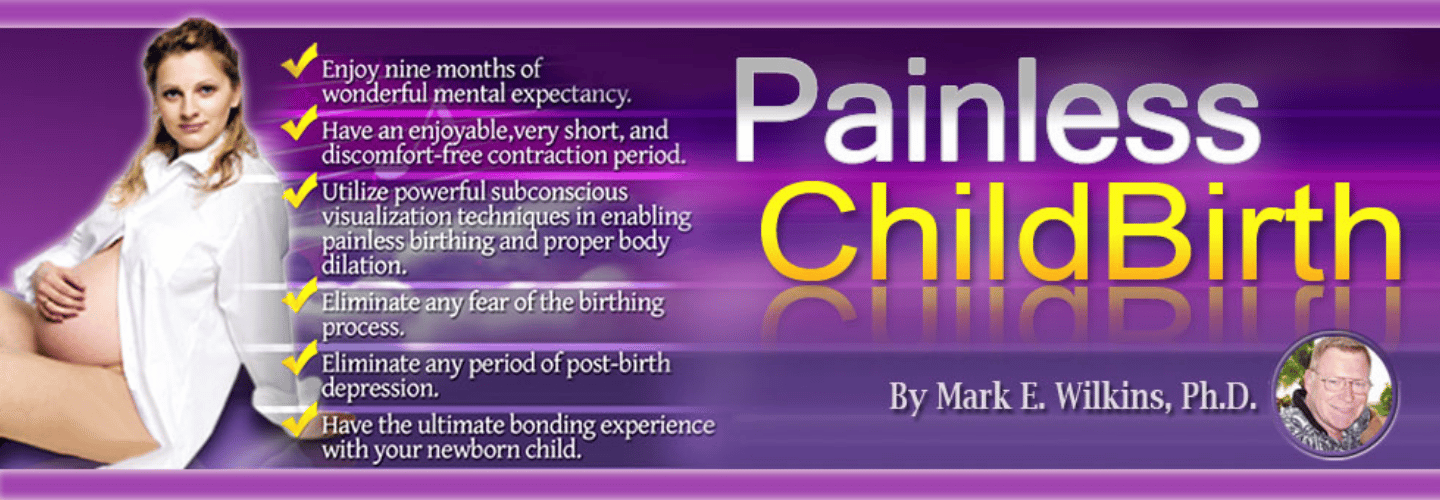
In the domain of childbirth, the charm of pain-free delivery through natural hypnosis techniques beckons to those seeking a serene and empowered entrance into motherhood. Imagine a journey where deep breathing intertwines with the power of visualization, paving the way for a tranquil birthing experience. The whispers of affirmations and the dance of self-hypnosis offer glimpses of control and serenity amidst the waves of labor. As we explore further into the domain of water therapy, touch therapy, and movement strategies, the path to a harmonious and confident childbirth reveals itself, promising a tale of resilience and grace.
Benefits of Natural Hypnosis for Childbirth
In the domain of childbirth, the benefits of embracing natural hypnosis techniques are profound, offering a pathway to reduced pain medication reliance and enhanced relaxation during labor.
Hypnosis for pain management in natural birth settings provides women with valuable coping skills and relaxation techniques to navigate the challenges of labor. Through childbirth education classes that incorporate hypnobirthing, expecting mothers can learn to reduce pain perception and promote a sense of calm and control during the birthing process.
By breaking the Fear-Tension-Pain cycle, hypnosis optimizes muscle function and fosters a positive birth experience by promoting a state of deep relaxation. Studies have shown that using hypnosis for childbirth can lead to shorter labor stages, improved Apgar scores for newborns, and lower rates of C-sections.
The practice of hypnobirthing empowers women to tap into their inner strength, manage pain effectively, and approach childbirth with a sense of confidence and serenity.
Deep Breathing Techniques for Pain Relief
In the domain of pain-free childbirth, the art of deep breathing emerges as a profound ally.
Through rhythmic inhalations and exhalations, a harmonious dance ensues, guiding the body towards a state of serene tranquility.
Within each breath lies the power to access relaxation, forge a connection between mind and body, and embrace a profound sense of calmness.
Breathing for Relaxation
Engage in rhythmic deep breathing to access a world of relaxation and pain relief during childbirth. Deep breathing techniques intertwined with hypnosis offer a powerful method to diminish pain perception and manage labor discomfort effectively.
By practicing controlled deep breathing, the body receives ample oxygen, the mind finds tranquility, and the stress levels decrease, triggering the relaxation response. Regular deep breathing exercises serve as a valuable tool for pain management during labor, fostering a sense of focus, control, and calmness.
Through the art of deep breathing in hypnosis, individuals can pave the way for a smoother childbirth experience, where relaxation becomes a guiding influence in guiding the journey of bringing new life into the world.
Mind-Body Connection
Harnessing the profound connection between the mind and body, deep breathing techniques in hypnosis serve as a transformative tool for achieving pain relief during childbirth. These techniques, often taught in hypnobirthing classes, enable deep relaxation and aid in labor pain management.
By focusing on slow, rhythmic breathing patterns, mothers can activate the body's relaxation response, leading to enhanced comfort measures and childbirth without pain. Deep breathing promotes better oxygen flow, reducing stress and tension, while optimizing the mind-body connection for a more comfortable birthing experience.
Regular practice of deep breathing not only alleviates discomfort but also increases oxygen levels, aiding in effective pain management during labor. Embracing deep breathing techniques within hypnosis methods can significantly enhance the birthing journey.
Calmness Through Breath
Achieving a state of serene tranquility through intentional and mindful breathwork is a foundational aspect of utilizing deep breathing techniques for pain relief during childbirth.
Deep breathing techniques play a vital role in labor pain management by increasing oxygen flow, reducing stress hormones, and promoting relaxation. Controlled deep breathing not only lowers heart rate and blood pressure but also alleviates tension, aiding in managing contractions.
Deep breaths provide distraction, focus, and a sense of calmness, ultimately reducing the perception of pain. Consistent practice of deep breathing before labor establishes a calming routine that can be beneficial for pain management during childbirth.
Visualization Methods for Labor Comfort
Within the domain of pain-free childbirth, one potent technique that stands out is the practice of visualization methods for labor comfort. Visualization methods in childbirth involve harnessing the mind's ability to create mental images of a serene and pain-free labor experience.
By focusing on positive imagery during contractions, women can effectively reduce their pain perception. These visualizations may include picturing scenarios such as a peaceful beach, a blooming flower, or the baby descending smoothly through the birth canal. Research suggests that visualizing a calm and soothing birth environment can notably decrease anxiety levels and enhance overall relaxation during labor.
Regular practice of visualization techniques trains the mind to associate the process of labor with comfort, positivity, and a sense of control. This reinforces the potent mind-body connection, enabling women to navigate childbirth with greater ease and confidence.
Affirmations for Positive Birth Experience

Step into the world of positive affirmations, where the power of words can shape your childbirth experience.
Harness the strength of affirmations to cultivate a mindset of empowerment and tranquility, paving the way for a smooth and positive birthing journey ahead.
Let us explore how affirmations can be your guiding light towards a pain-free and fulfilling birth experience.
Power of Positive Affirmations
Embrace the transformative power of positive affirmations as a guiding light towards a serene and empowering birth experience.
Positive affirmations play an essential role in childbirth by reducing fear, anxiety, and pain perception. They instill a positive mindset, fostering confidence in the birthing process and promoting relaxation. By incorporating affirmations during labor, a calming environment is created, enhancing emotional well-being.
These affirmations focus on empowerment, trust in the body's ability to give birth, and positive outcomes. Through regular practice, affirmations can reframe negative thoughts, increase resilience, and cultivate a sense of control during childbirth.
Embracing the strength of positive affirmations can lead to a more positive and empowering birth experience for mothers.
Using Affirmations Effectively
To harness the transformative potential of affirmations in childbirth, one must cultivate a personalized repertoire of positive statements that nurture confidence and serenity throughout the birthing process. Affirmations play an essential role in promoting a positive birth experience by instilling a sense of coping, reducing anxiety, and enhancing relaxation and comfort.
By incorporating affirmations tailored to address individual fears and concerns, expectant mothers can cultivate a mindset that supports a spontaneous vaginal birth and reduces the reliance on pain medication or medical interventions. These affirmations not only empower the mother but also provide a source of strength and reassurance, especially when supported by a trusted support person.
Embracing affirmations effectively can pave the way for a calmer, more empowering birthing experience.
Self-Hypnosis Skills for Labor Control
Enhance your birthing experience by cultivating the practice of self-hypnosis skills for labor control, a powerful method that empowers you to focus inwardly and harness the potential for pain management and relaxation during childbirth.
Self-hypnosis involves directing your awareness inward and increasing receptiveness to positive suggestions, aiding in pain management and promoting relaxation. Whether learned through classes or self-study, these techniques enable individuals to feel more centered, focused, and empowered during labor.
By practicing self-hypnosis, mothers can effectively reduce anxiety, fear, and discomfort commonly associated with childbirth, allowing for a more controlled and positive birthing experience. This natural method empowers women to actively participate in their pain management, promoting a sense of calm and confidence throughout the labor process.
Through self-hypnosis, individuals can tap into their inner strength and resilience, creating a supportive environment for a smoother and more comfortable childbirth journey.
Relaxation Techniques During Childbirth

Deeply ingrained in the essence of childbirth are the invaluable relaxation techniques that pave the way for a serene and empowered labor experience. During childbirth, utilizing relaxation techniques such as deep breathing, visualization, and hypnosis scripts can greatly impact the overall childbirth experience.
These methods play a crucial role in pain management by reducing stress, fear, and muscle tension, ultimately leading to a more efficient labor process. By creating a relaxed environment, mothers can enhance comfort and promote a sense of calmness during labor, supporting ideal blood flow to the pelvic area.
Hypnobirthing techniques, focusing on training the brain for a deep relaxation response, enable mothers to perceive pressure rather than pain during childbirth. Incorporating practices like progressive muscle relaxation, massage, and specific breathing exercises further aids in pain management, contributing to a more pain-free and positive childbirth experience.
Embracing these relaxation techniques can transform the childbirth journey into a peaceful and empowering endeavor.
HypnoBirthing for Pain Management
In the sphere of pain management during childbirth, HypnoBirthing emerges as a transformative approach that harnesses deep breathing, visualization, and affirmations to cultivate a confident and empowered birthing experience. Through the power of self-hypnosis, mothers can navigate the intensity of labor with grace and ease.
Here are four ways in which HypnoBirthing aids in pain management during labor:
- Replacement of Fear with Confidence: By introducing new vocabulary for birthing sensations, HypnoBirthing helps mothers shift from fear to confidence, allowing for a more positive and relaxed experience.
- Control and Wakefulness: Participants in HypnoBirthing remain fully awake and in control, utilizing self-hypnosis techniques to dive deep into a state of relaxation while staying present.
- Reduced Pain and Medication Use: Studies suggest that self-hypnosis in HypnoBirthing can effectively reduce pain levels and minimize the need for medication during labor.
- Skill Development and Practice: HypnoBirthing classes offer a platform for learning and practicing hypnosis techniques, equipping mothers with valuable tools for coping with labor effectively.
Embrace the efficacy of hypnosis in HypnoBirthing to welcome your child into the world with strength and serenity.
Water Therapy for Labor Ease

For a serene and soothing approach to pain management during childbirth, consider the calming benefits of water therapy.
Water therapy, involving immersion in warm water, offers natural pain relief and relaxation for women in labor. The warm water helps reduce labor pain perception, increase comfort levels, and decrease anxiety, creating a more positive birthing experience.
Immersing in water during labor provides a tranquil environment that can help women cope with the intensity of childbirth in a gentle and serene manner. This method is associated with lower rates of medical interventions and higher satisfaction with the overall birth process.
The soothing properties of water therapy make it a popular choice for those seeking a more comfortable and empowering childbirth experience. By embracing the comfort and relaxation offered by water immersion, women can enhance their natural pain relief options and promote a sense of calm during labor.
Touch Therapy Benefits in Childbirth
The gentle power of touch therapy in childbirth transcends mere physical contact, offering profound comfort and emotional support during the labor process. In the domain of touch therapy benefits for childbirth, envision:
- Comfort and Reassurance: Imagine gentle hands providing a sense of security, easing any anxieties or fears that may arise during labor.
- Muscle Relaxation: Picture the soothing strokes of light touch massage and the gentle pressure of a T stroke releasing tension in the body, promoting relaxation.
- Calmness and Serenity: Visualize the rhythmic movements of sacral massage and arm strokes inducing a state of calmness, creating a serene birthing environment.
- Positive Birthing Experience: Envision how touch therapy can pave the way for a positive birthing journey, reducing stress and enhancing the overall experience with its comforting embrace.
Through the art of touch, mothers can find solace, strength, and connection, ushering in a harmonious and empowering childbirth experience.
Movement Strategies for Comfort

Movement during childbirth serves as a vital tool for pain management and enhancing the birthing process, offering a holistic approach to comfort and progression. By incorporating various movement strategies, such as walking, swaying, or changing positions, mothers can effectively manage pain and promote labor progress. Different positions like squatting, kneeling, or hands and knees not only alleviate discomfort but also aid in ideal fetal positioning for smoother delivery. Continuous movement prevents prolonged pressure on one area, reducing pain intensity and enhancing overall comfort during labor.
Moreover, engaging in rhythmic movements like hip circles, pelvic tilts, or gentle stretches can ease tension, increase circulation, and induce relaxation for laboring individuals. By incorporating rhythmic movements such as dancing or rocking, distractions from pain sensations occur, triggering the release of endorphins. This natural process creates a calming environment, facilitating a smoother and more comfortable childbirth experience. Embracing movement strategies during labor is not only beneficial for pain management but also essential for promoting relaxation and progression in childbirth.
Frequently Asked Questions
Can Hypnosis Reduce Pain in Childbirth?
Hypnosis can effectively reduce pain during childbirth by harnessing the mind-body connection to manage discomfort. Through relaxation techniques, breathing exercises, and hypnobirthing success strategies, women can experience a pain-free delivery.
Hypnosis benefits include decreased anxiety, fear, and enhanced mood, contributing to a positive childbirth experience. By utilizing natural hypnotic methods, mothers can potentially reduce the need for pharmacological pain management, promoting a more gentle and empowering birthing process.
What Are the Techniques of Hypnosis Birthing?
Hypnosis birthing techniques encompass deep relaxation, positive affirmations, visualization techniques, breathing exercises, and fostering a strong mind-body connection. By cultivating an empowering mindset and providing a supportive environment, mothers can experience natural pain relief during childbirth.
These methods guide individuals to tap into their inner resources, promoting a sense of calm, focus, and control throughout the labor process.
Which Childbirth Method Involves a Form of Self-Hypnosis?
A childbirth method involving a form of self-hypnosis is HypnoBirthing. This approach emphasizes self-guided relaxation, harnessing the mind-body connection, positive affirmations, visualization techniques, deep breathing, and pain management.
It promotes natural childbirth by facilitating a mindful birthing experience. Through HypnoBirthing, individuals learn to enter a state of deep focus and relaxation during labor, empowering them to control their birthing experience through self-hypnosis practices.
What Is the Most Painless Birth Method?
In the quest for the most painless birth method, the integration of breathing exercises, visualization techniques, relaxation music, massage therapy, water immersion, acupressure points, movement, positioning, and aromatherapy oils stand as pillars of support.
Through these channels, the journey of childbirth can be guided towards a serene and harmonious experience, fostering a sense of tranquility and empowerment amidst the waves of labor.
Conclusion
To sum up, natural hypnosis techniques offer a transformative approach to pain-free childbirth, empowering women with invaluable coping skills and relaxation methods.
By incorporating deep breathing, visualization, affirmations, self-hypnosis, and other supportive strategies, women can experience a calm and positive birthing experience.
These techniques not only reduce pain perception and anxiety but also foster a sense of inner strength and confidence, leading to a more comfortable and empowered labor process.





